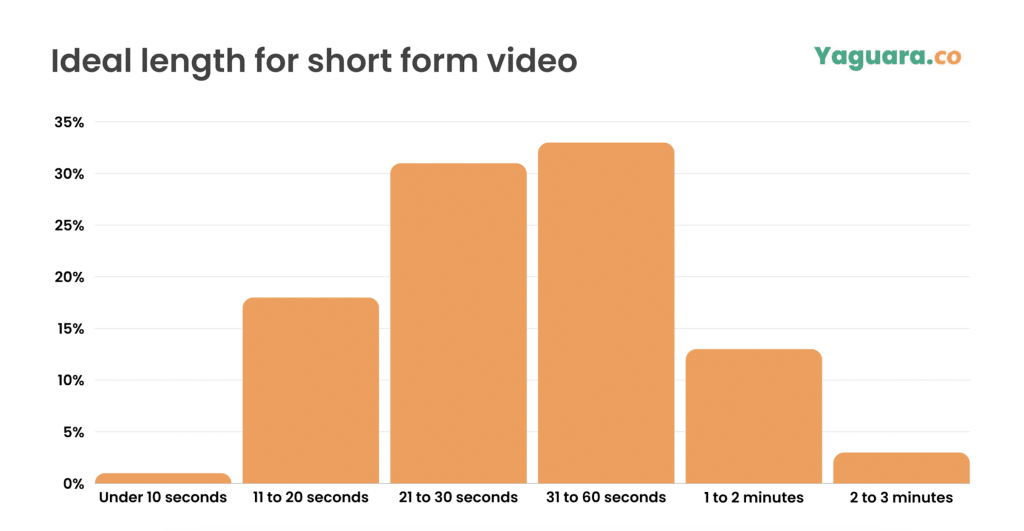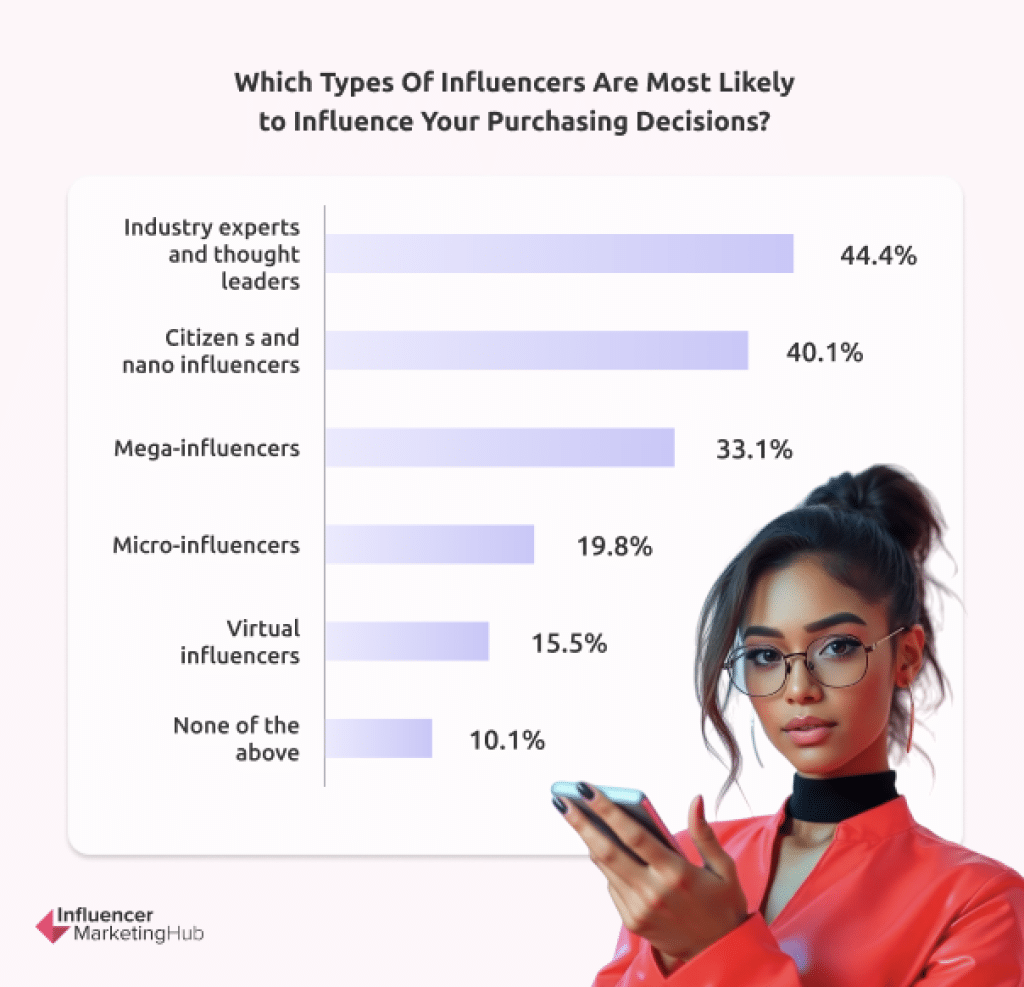- Trend 1: The Dominance of Short-Form Video and Engaging Visual Content
- Trend 2: The Rise of Niche Communities and Authentic Engagement
- Trend 3: The Evolution of Social Commerce and Direct-to-Consumer Sales
- Trend 4: Leveraging Data and AI for Personalized Social Media Marketing
- Trend 5: Navigating Platform Changes and Emerging Social Media Trends
- Key Takeaways
- Frequently Asked Questions (FAQs)
Just when you think you’ve mastered social media marketing, trends shift and you have to adjust your strategy once more to remain competitive. From the explosive growth of social media to the more nuanced shift toward hyperpersonalized content, today’s marketing landscape is complex and challenging. Below, I’ll explore the top five trends shaping social media marketing in 2025, to help you navigate these ever-evolving waters.
Trend 1: The Dominance of Short-Form Video and Engaging Visual Content
Short-form video isn’t just a trend: Platforms like TikTok, Instagram Reels, and YouTube Shorts continue to dominate consumer attention, including the desirable 18-to-34 age group. The appeal is clear, with short-form videos being immersive, easily digestible, and mobile friendly.
But how long should a short-form video be? Most marketers recommend staying between 31 and 60 seconds, although an argument can be made for slightly shorter clips.

Source: Yagauro.co
That said, 2025 has brought a new level of sophistication to short-form video. Brands can no longer earn virality with dance videos and funny clips: To compete in an overcrowded marketing space, marketers need to grab attention and inspire action.
Some key statistics related to video in 2025 include:
- Short-form videos enjoy 2.5 times the engagement of long-form videos.
- 72% of consumers say they’d rather watch a video than read text when learning about products.
- More than 50% of marketers report that their businesses use short-form videos in their marketing efforts.
- 66% of marketing professionals use closed captions for their video advertising.
Top strategies for short-form video success include:
- Keep it vertical: Mobile has taken the lead in internet traffic, and that’s even more relevant when it comes to short-form video. To match that behavior, top short-form video platforms recommend a 9:16 aspect ratio.
- Use captions and text overlays: Users aren’t always in an environment where they can listen to content. Captions and text overlays make your videos more accessible to viewers.
- Incorporate trending sounds and challenges: Some platforms prioritize content that uses trending sounds and challenges. It’s one way you can use the algorithms to boost visibility.
- Focus on storytelling: Today’s consumer tends to tune out obvious marketing pitches. Instead of using these platforms to sell your products or services, put the emphasis on storytelling, and sales will follow.
- Test interactive tools: Polls, augmented reality filters, and clickable overlays can be a great way to engage your audience.
- Go live: Once you have enough followers, you can go live to interact with brand loyalists and potentially attract new followers. This is especially useful for tutorials or answering customer questions.
Performance marketing platforms that focus on results, not reach, are key. You don’t just want to put your content in front of users — you want to inspire action! The more advanced performance marketing platforms offer tools that will let you easily repurpose top-performing videos to get the most out of your efforts, while also using predictive analytics to put the right video in front of the right potential customer at precisely the right time.
Trend 2: The Rise of Niche Communities and Authentic Engagement
Algorithms have taken over social media feeds, particularly with the rise of artificial intelligence (AI). As a result, consumers have sought out smaller, more niche spaces where they feel seen and valued. Whether they’re on Discord, Reddit forums, or Facebook groups, social media users seek community and authenticity.
- 53% of survey respondents believe online communities should include less than 200 people.
- Creators with around 1,000 followers have an average engagement rate of 9.7%, compared to influencers with 100,000 followers or more, who have an engagement rate of only 1.7%.
- Marketers gravitate toward smaller groups of influencers, with 49.6% saying they work with only one to five influencers.
- Industry experts and thought leaders drive consumer purchasing decisions, with 44% naming them as the most influential compared to 33.1% who are swayed by mega-influencers.

Source: Influencer MarketingHub
For brands, this shift brings more work. It’s no longer sufficient to blast a message to the masses: Instead, marketers have to put time into building and participating in communities. You can reach users with behind-the-scenes videos and posts that elevate users. Even sharing your customers’ posts can show your support for brand loyalists.
Engaging with these communities requires a genuine presence, though: Members can tell if a brand is simply engaging to market to them. Brands should participate in conversations and provide value without selling. This approach can not only convince community members to look into your offerings, but it can also give you invaluable insight into customer needs and preferences.
Trend 3: The Evolution of Social Commerce and Direct-to-Consumer Sales
Social media has moved from networking to shopping. In fact, the social commerce market size is expected to grow to $2.9 trillion by 2026.

Source: Tidio
In 2025, in-app purchases, shoppable posts, and seamless checkout purchases mean businesses can grab sales directly on social media sites. Direct-to-consumer (D2C) brands can take advantage of native checkout capabilities on both TikTok and Instagram Shops.
Here are a few notable statistics related to social commerce:
- 58% of Gen Z and 54% of millennials feel comfortable buying products directly on social media platforms, but older consumers gravitate toward ecommerce platforms to purchase.
- Facebook is the most popular social commerce platform, with experts estimating a reach of 64.6 million buyers in 2024.
- Social commerce is particularly popular in Asia. In China, social media conversion rates are 30%, thanks to livestream shopping, influencer marketing and social media auctions.
Take note, though, that as convenient as these integrated shopping features can be, brands still need to build a shop that attracts and engages customers. Live shopping events and real-time product launches can help turn content into conversion points. You can also tap influencers for product/service walkthroughs to grab the interest of top-of-funnel customers.
The challenge is in making every touchpoint shoppable and engaging to boost the chance of a conversion. But, with your busy schedule, how can you do that without reinventing the wheel each time?
In today’s competitive market, timing is everything. Analyzing customer behavior can help you pinpoint peak engagement times and preferred content formats. By gathering this data, you can create content your target customers want to see and post it at the time they’re most likely to engage with it.
Trend 4: Leveraging Data and AI for Personalized Social Media Marketing
Social media is vital in reaching customers, but audience saturation, rising costs, and ad fatigue have led to diminishing returns. In fact, 75% of marketers say their efforts are seeing declining results. This has led marketers to seek out better ways to grab attention using data and the latest AI-powered technology.
In 2025, personalized marketing is more important than ever. Don’t believe us? Here are some statistics that could change your mind:
- 64% of customers worldwide prefer to buy from brands that tailor ads to their wants and needs.
- Privacy still matters to consumers. 53% are extremely or very concerned about data privacy in a personalization era.
- 89% of decision-makers believe personalization is crucial to their business’ success over the next three years.
Here are some ways you can stand out in an increasingly competitive market:
- Audience segmentation: Privacy concerns have made it tougher for marketers to target audiences by personal details like gender and past browsing habits. AI allows them to target users by current and predicted behaviors, rather than demographics.
- Creative variation testing: Creatives can make a big difference in your ad’s performance. Today’s tools let you try different text and visuals, then monitor results to identify the ads that convert best.
- Automated bidding strategies: The paid advertising space is more competitive than ever, making it tough for marketers to stay on top of their bids. Tools that continuously optimize spend can help advertisers gain an advantage on the most popular social media platforms.
- Conversational AI: As mentioned, building and maintaining a community is the cornerstone of social media marketing success in 2025. Tools that keep the conversation going on social media platforms can help you provide customer service without having to be online 24 hours a day.
Download Taboola's Creative Best Practices for 2025 Playbook
Traditional social media marketers are also finding value in expanding into digital channels outside of social media, like the open web. PortAventura World, for example — a tourist resort in Spain — achieved a 44% increase in return on ad spend (ROAS) by placing ads across top publisher sites. By combining your social media efforts with other advertising efforts, you can create an omnichannel marketing strategy that works well into the future.
Trend 5: Navigating Platform Changes and Emerging Social Media Trends
The only constant in social media is that it will change. For the past few years, social media has been on a trajectory toward more privacy and niche user spaces, so the best thing brands can do is get ahead of future shifts, and that requires agility and a willingness to experiment.
Some current shifts I’m seeing in 2025 include:
- Instagram’s focus on AI-suggested video feeds.
- TikTok’s new specialized rewards program.
- Ephemeral content like Instagram Stories driving engagement.
Added to this are emerging platforms like BeReal and Lemon8, which are both attracting Gen Z attention. More than ever, brands need to be able to quickly pivot to reach users where and how they consume content. This means adapting creatives, shifting budgets, and testing across platforms.
Here are some statistics to keep in mind as we tackle the rest of 2025:
- More than 64.7% of the world’s population is active on social media.
- Globally, individuals spend an average of 2 hours and 20 minutes every day on social media, spread across about 6.7 platforms.
- The most popular social media platforms are YouTube, with 3.9 billion monthly active users, and Facebook, with 2.1 billion monthly active users. Threads, TikTok and Instagram are seeing the highest monthly growth.
Staying updated on platform changes and user behavior trends is more crucial than ever. You can do this by regularly reviewing industry reports while also keeping an eye on platform analytics. This will allow you to adjust your strategies proactively, helping you stay ahead of the curve.
Key Takeaways
When it comes to social media marketing, short-form video and visual content dominate in 2025. It’s also crucial for brands to build community, but authenticity is essential. If brands can find audiences in smaller, more niche communities, they may have an easier time reaching consumers. But, constant platform changes require brands to be flexible. Staying on top of industry shifts and your own analytics can help you future-proof your marketing campaigns.
Make sure to explore B2B Social Media Trends for 2025.
Frequently Asked Questions (FAQs)
What are the most effective social media platforms for advertising in 2025?
The most effective platforms are those that help you meet your goals and reach your intended audience. For visual content, TikTok, Instagram, and YouTube dominate, while Pinterest and Facebook rule when it comes to social commerce. Demographics are also a consideration. Facebook still skews older, while TikTok and YouTube remain great ways to reach Generation Z.
How can brands measure the ROI of their social media marketing efforts?
To measure ROI (return on investment), look beyond likes and follows. Metrics like return on ad spend, cost per acquisition, click-through rates (CTRs), and conversion rates offer better insights into how your ads are paying off. The right performance platform will offer this information at a glance, along with AI-powered insights that can pinpoint areas where you can boost ROI.
What are some common mistakes to avoid in social media marketing?
Failing to pivot remains one of the biggest mistakes a brand can make in 2025. It’s also important to spread your efforts across multiple platforms rather than relying on one, particularly if you’ve focused on the same platform for years. Neglecting to engage with your audience and ignoring user feedback can sabotage your social media campaigns.
How is the metaverse and Web3 impacting social media strategies?
Although it’s still new, the metaverse is already influencing brands, which are experimenting with virtual experiences and digital goods. Web3 is also in its early stages, but brands can take advantage of this direct connection to consumers by creating communities and tokenized incentives. By staying informed of emerging technologies you can position your brand as an innovator in your niche.
What are the key metrics for measuring success in social media marketing?
In this area, 2025 isn’t all that different from previous years. CTRs, conversion rates, and customer lifetime value are all essential metrics. You can also keep an eye on engagement rates, including likes, shares and comments, to get a feel for audience sentiment.



